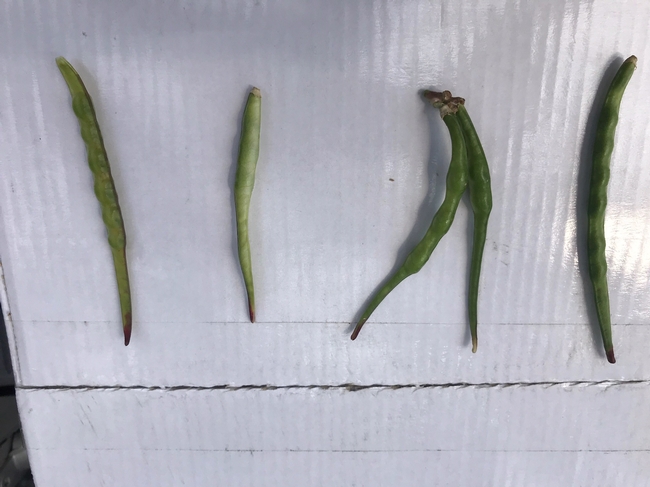Recently, I received a call about a blackeye bean field in the San Joaquin Valley with a lot of bean pods that did not fill out at the tips (photo). I contacted the UC Riverside blackeye bean breeders Drs. Phil Roberts and Bao Lam Huynh and they shared that this problem is primarily caused by heat, which affects pollen viability and thus fertilization. Here's their response:
It [lack of pod fill] is the typical male-sterility symptom [lack of pollen viability] associated with extreme temperatures (heat or cold). Based on the planting date you gave, we just checked the temperature in Denair, CA [farm location] and noted that it was quite warm (~100) during the flowering time (40-50 days after planting) and recently during the pod filling stage, so heat must have been a main cause. The symptom could also be more severe if water is limiting.
Always be prepared with good irrigation management practices for all crops going into heatwaves, like the one we're having now. The minimum seasonal irrigation needed to produce a blackeye bean crop being managed for full yield from one pod set is 16 to 18 inches. This estimate includes a pre-irrigation of 4-inches, and irrigations of 4-inches when floral buds first appear, and 8 to 10 inches during 5 to 6 weeks of flowering and pod filling. If additional irrigations are needed during the vegetative stage, one could increase the total irrigation requirement to 20 or more inches. Irrigating for a second flush of pods could require an additional 8 to 12 inches of water. Irrigation requirements are further increased by any water required to leach salts or to compensate for an inefficient irrigation system.
Additional water may need to be applied during extreme heat events which drive plant transpiration rates to the limit. Make sure to check the soil moisture in the top 12 to 24 inches of the soil profile and apply additional water if the soil is dry. If in doubt about how much additional water is needed, check the reference evapotranspiration (ETo) and make sure to irrigate to replace at least 120% of your daily ETo in your area. The current (mid to late August) daily ETo in the San Joaquin Valley ranges from 0.25 to 0.30 in/day; make sure your applied irrigation replaces 120% of these values.
More information on growing blackeye beans can be found in the publication, UC ANR Blackeye bean production in California, http://beans.ucanr.edu/files/226601.pdf.
Attached Images:
